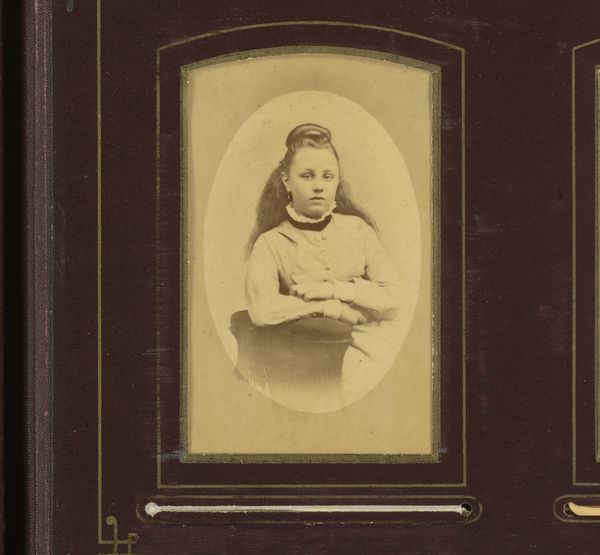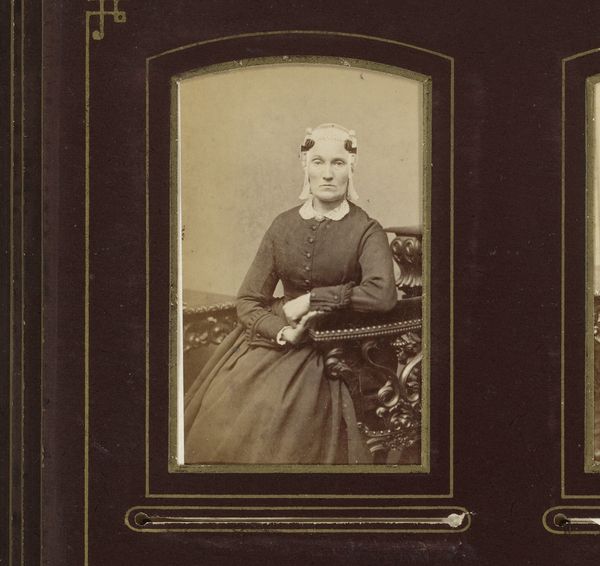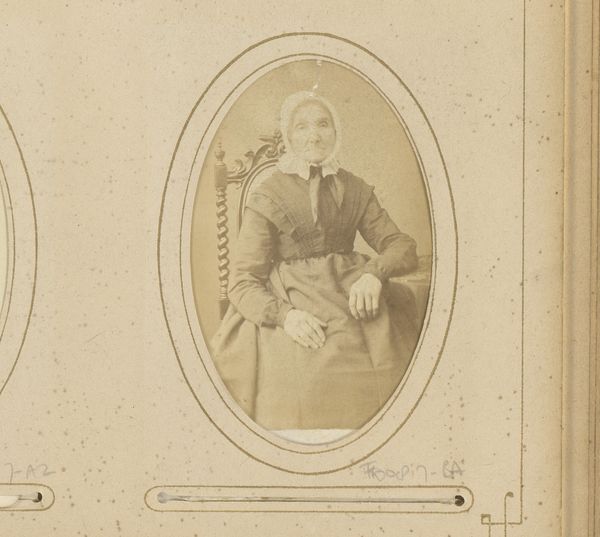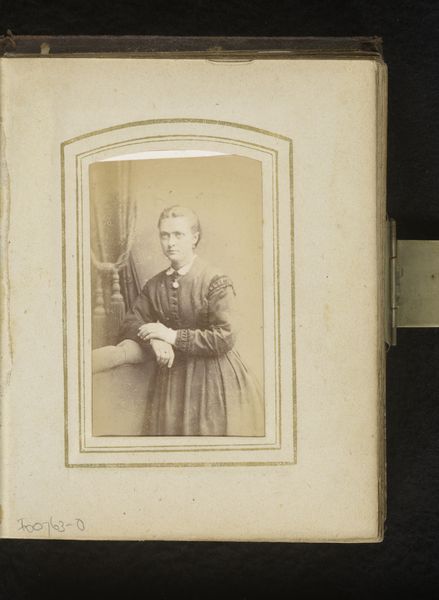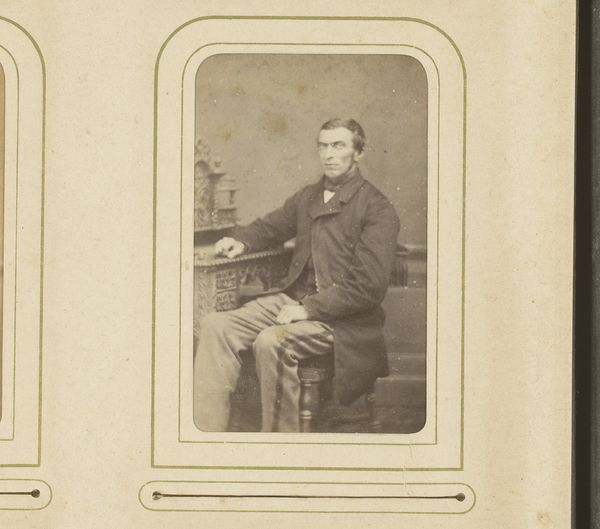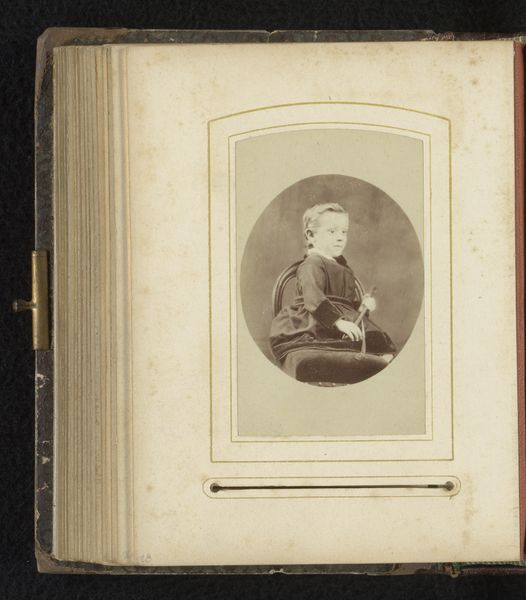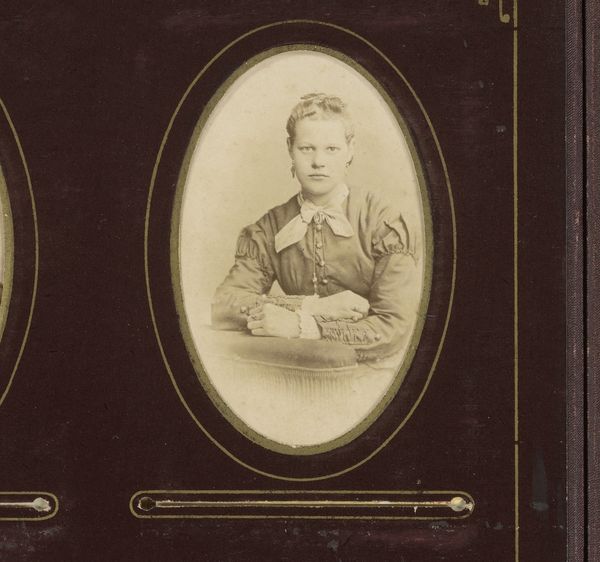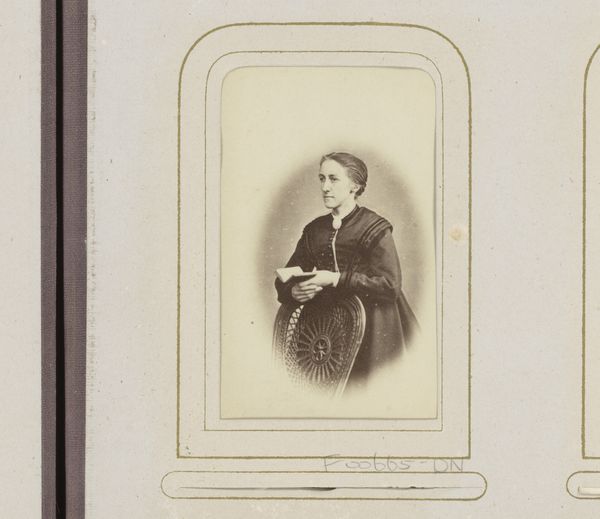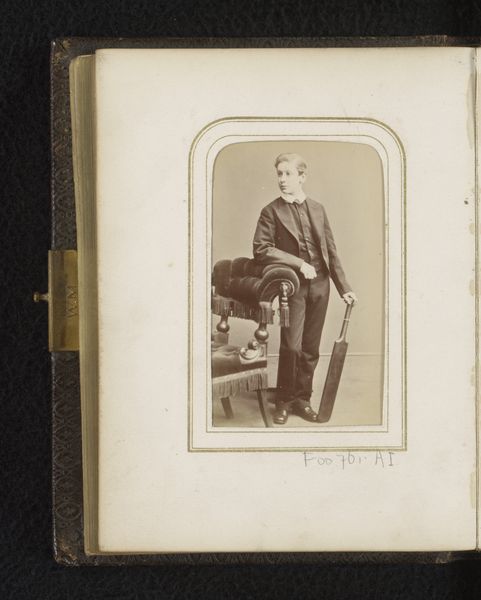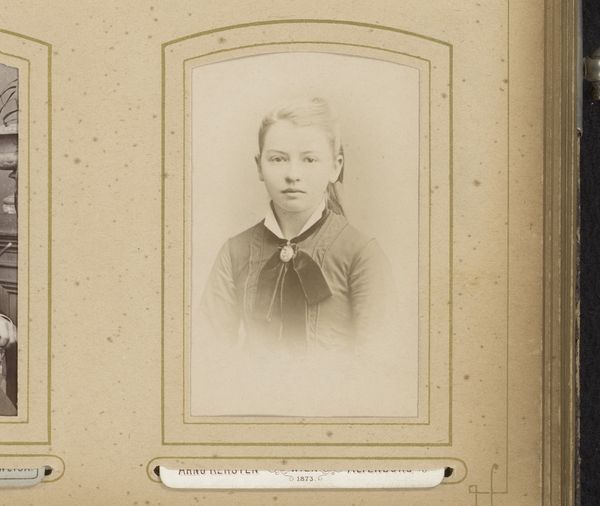
Portret van een vrouw met muts en oorijzers, leunend op een stoel 1864 - 1893
0:00
0:00
photography, albumen-print
#
portrait
#
self-portrait
#
photography
#
19th century
#
albumen-print
Dimensions: height 82 mm, width 50 mm
Copyright: Rijks Museum: Open Domain
Editor: Here we have a photo titled "Portret van een vrouw met muts en oorijzers, leunend op een stoel," by Abraham Koorenhoff, dating somewhere between 1864 and 1893. The photograph is an albumen print. I find myself drawn to the textures. How would you interpret this work? Curator: Focusing on its materiality, albumen prints were mass-produced. Consider the labor involved in preparing the paper, the silver nitrate solutions, and the printing process itself, often done by anonymous workers in large studios. The "art" here is arguably less about Koorenhoff's artistic vision and more about the industrialization of portraiture. Editor: So, you're saying the value isn't in its artistic merit, but in its historical context? Curator: Precisely. Think about who commissioned this portrait. Likely a member of the emerging middle class seeking to solidify their status through visual representation. The production process democratized portraiture, shifting it from the realm of the wealthy to a wider consumer base. How does this understanding of its material production affect your perception of the sitter's "aura?" Editor: I see what you mean. Knowing it was a more accessible form changes my understanding of the portrait as a statement of status. Instead of seeing a unique piece of art commissioned specifically for her, it seems more about belonging. What would such a portrait cost back then? Curator: Interesting to think of its affordability, no? It makes me reflect on how it would compare to contemporary photo development from that period in history. This invites one to further analyze the social dynamics and class distinctions being negotiated through the act of photographic consumption in the 19th century. Editor: This has definitely altered my appreciation for this piece and the process through which the image came into being. Curator: Indeed, sometimes looking beyond the image itself helps to understand its broader significance.
Comments
No comments
Be the first to comment and join the conversation on the ultimate creative platform.

